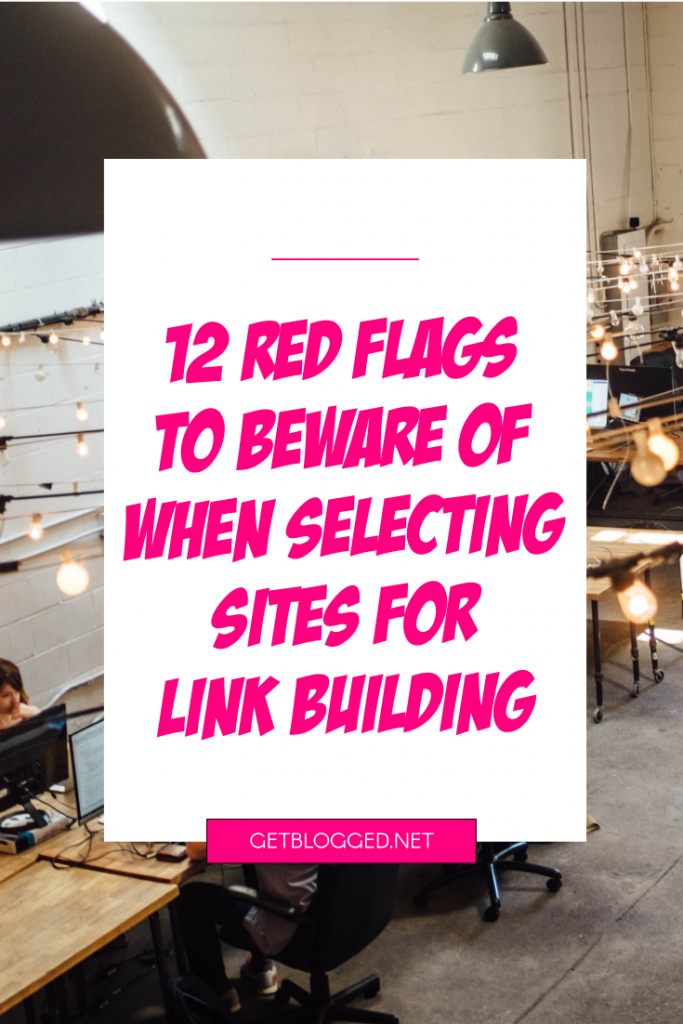An essential skill when you’re carrying out link building activities is to be able to assess a website and establish whether it’s useful, legit, and appropriate for your proposed content placements.
Though there’s no shortage of sites out there for you to work with, not all are built equally, and if you don’t have some solid quality control processes and an understanding of what makes a site a strong choice, you can run into all kinds of problems further down the line.
Of course, you’ll have your chosen data metrics to look at.
One of the most popular is Moz’s Domain Authority (DA), and that’s certainly a good starting point when it comes to cherry-picking the sites that will give you the best link juice.
For the absolute best return on investment though, you need to be diving a little deeper than this.
The Get Blogged self-service blogger outreach platform provides the metrics and data you need to carefully vet all of our bloggers’ sites before you select them for a content placement or collaboration. This is so you can ensure that the links you gain are of the highest possible quality.
You’ll find no PBNs, link farms, or dodgy dealings around these parts. We work with only genuine bloggers, with a real passion and zest for their subject and who are committed to creating only the very best content.
So it goes without saying that our site selection factors go beyond just looking at DA.
Today, I’m going to walk you through a selection of the checks that we make when we’re pinpointing the best bloggers for our clients’ projects, and why they should be part of your own selection process when you’re embarking on a link building project with our self-service blogger outreach platform.
It’s worth noting here before we jump in, that almost all of these points have caveats. On their own, they’re not necessarily a sign that you should ditch a prospective website completely and avoid it all costs.
But they do build up a bigger picture of a site’s quality as a whole, and if you’re seeing issues in 3-4 of the covered areas, you should certainly pause and consider looking elsewhere.
Let’s dive in…
Currently reading: 12 Red Flags To Beware Of When Selecting Sites For Link Building Click To Tweet1. The URL doesn’t make sense or isn’t relevant to the niche
Websites can have weird, whacky, and wonderful names, and you’ll come across all kinds of different URLs when you’re doing blogger outreach.
Sometimes though, if they’re completely nonsensical or appear to have no relevancy to the nature of the content, it could be an indicator that the site is built on a repurposed domain that was previously used for something completely different.
The main issue here is that at first glance, you’ve got no idea what the domain was previously used for. It could have been part of a bad neighbourhood, stuffed with spammy content, or engaged in black-hat SEO tactics which could ultimately cause you problems in the future.
For a snapshot of the former life of a domain, try out archive.org.
2. There’s huge discrepancies in metrics from different tools
Different metrics tools use different algorithms to assess sites, so there are always going to be some discrepancies from one to another.
It’s when the data is wildly different though that it could be a sign that there’s been some manipulation at play, and there are deeper issues going on beneath the surface.
This is one of the reasons why we use API data from across various providers to cross-reference our quality checks.
3. The site is crammed full of Adsense/PPC ads
Running ads is a totally legitimate and acceptable monetisation strategy, but if you find that there’s more ads than content, or they completely dominate the site at the cost of user experience, exercise caution.
4. The images are all obvious stock photos
This one is largely dependent on the niche. In some subject areas, such as business or marketing, stock photos are the accepted norm.
In some more creative niches though, the best bloggers will take their own photography, and indeed this can be one of the sites’ best selling points when it comes to collaborating with brands.
A successful partnership with such a site could result not just in a link placement, but in some high-quality marketing collateral that you can go on to use for brand awareness across your own platforms.
Take a common-sense approach with this one, but as a side note, do think outside of the box when it comes to what you can achieve from your link building campaigns. When done creatively, you can achieve way more than just link juice.
5. There are no associated social media profiles
The best sites, with high-quality content and a loyal readership, will almost always have a social media presence.
If your prospective site appears to have zero presence, it could be a sign that it was created purely for making a fast buck from selling links, and that it’s not a site that’s going to be loved and nurtured in the longer term.
6. There’s no real information on the contact page
A good contact page will usually include an email address, and sometimes even a phone number too.
If you can only find a contact form and no associated text, it could be a sign that the site isn’t as high quality as you might initially assume.
7. Every single post appears to be sponsored content
Again, this could be an indicator that a site exists purely for selling content placements.
A quality site will have a varied selection of posts, including those created by the author purely for the enjoyment of their reader.
8. The site covers an extremely wide range of niches and topics
There are plenty of highly covetable sites out there that dive into a variety of different subjects and do it really well.
A women’s lifestyle site, for example, might conceivably cover topics such as fashion, beauty, career, personal finance, travel, and more.
Similarly, many bloggers will start our writing in a specific niche, then once they’ve gained traction and success, they’ll be eager to start covering additional subjects that interest them. That’s completely normal and to be expected.
But when a site’s content is so vastly varied that it doesn’t make a great deal of sense for any reader who might land on it, this should be a red flag.
If the site you have your eye on has recently covered what to wear on a first date, how to groom a chihuahua, loan options for getting a new car, and a roundup of the best casinos to visit in London, then it’s probably worth asking yourself a few questions.
You get the picture. As is the case with most things, a bit of common sense goes a long way.
9. There are tons of irrelevant sidebar and footer links
This is an old-school link building tactic and is considered to be hugely spammy these days.
Ultimately, things like this will ruin the user experience, and that’s a pretty good rule of thumb to apply when you’re looking for problematic sites.
10. There are mentions of it being a ‘directory’ or accepting ‘article submissions’
Again, this is an old-school link building tactic that may have served you well a decade ago but should be avoided today.
A site that states they accept this kind of content is quite likely to not be particularly discerning with the work they publish, so you may want to avoid being associated.
Think of it like this… If something seems a little too good to be true, it probably is!
11. There’s no privacy policy page
The vast majority of websites require a privacy policy page, and there are very few exceptions to this.
Not only can it serve to give readers confidence in terms of how their data is handled and stored, but it can also ensure that you’re fulfilling various legal obligations.
If you can’t find this page on a site, it’s another sign that it should probably be avoided.
12. Your gut feeling tells you that this isn’t a quality, legitimate site
Is this a site that you’d return to simply for pleasure?
Does it appear to be well-loved and nurtured?
Do you get the impression that the owner takes pride in their work, and seeks to make it the best it can possibly be?
The more involved you get in link building and the longer you regularly visit sites with this in mind, the better your senses for this kind of thing will become.
The gut feeling might be a little harder to quantify than some of the other quality checks, but it’s definitely something that shouldn’t be overlooked!
Want to save this post so you can come back to it later? Pin the image below on Pinterest.



 rated
rated




![6 ways to collaborate with bloggers this Thanksgiving [with case studies]](https://getblogged.net/wp-content/uploads/2022/10/pexels-rodion-kutsaiev-10060431-300x300.jpg)


![Blogger's guide to seasonal gift guides [+ 20 ideas to steal]](https://getblogged.net/wp-content/uploads/2022/09/pexels-ray-piedra-1502219-300x200.jpg)
![17 Blogger Marketing Ideas For September & October 2022 [+ Traffic Trends]](https://getblogged.net/wp-content/uploads/2022/09/pexels-lukas-628244-300x199.jpg)









